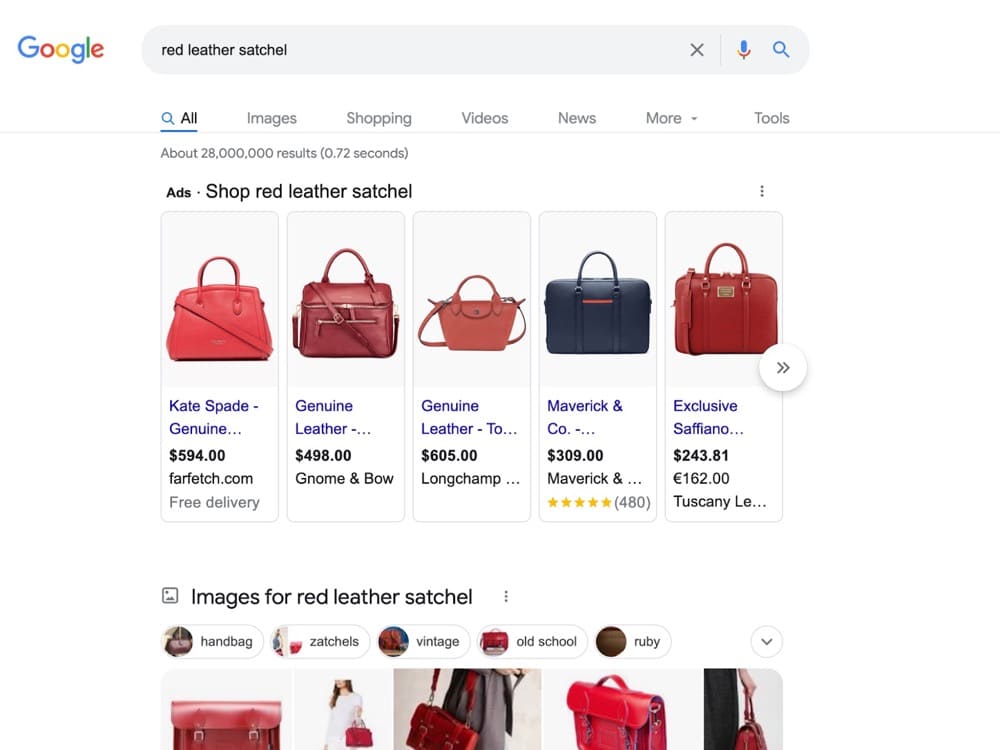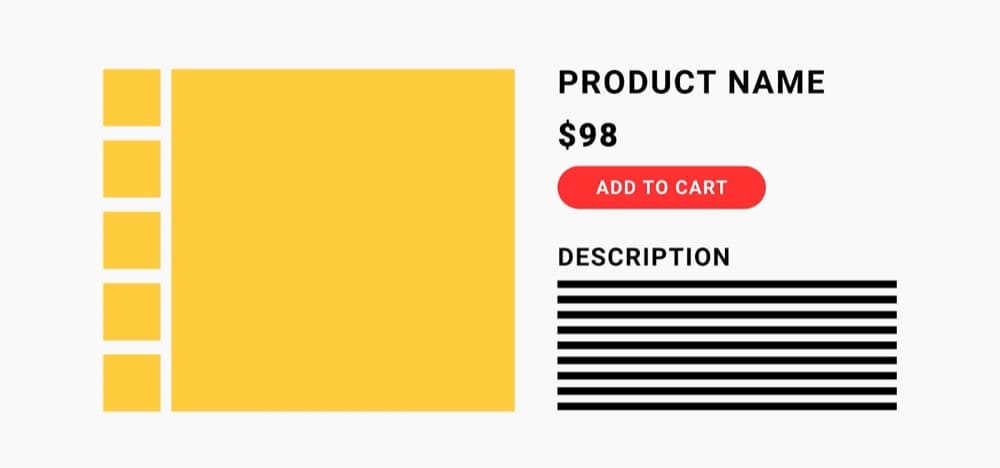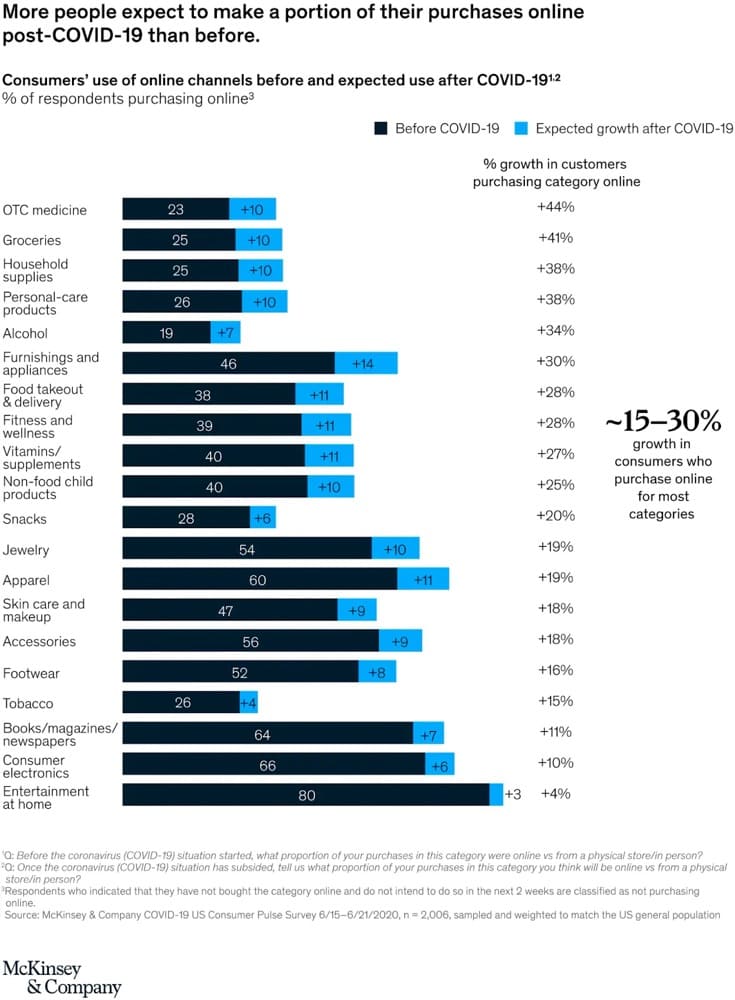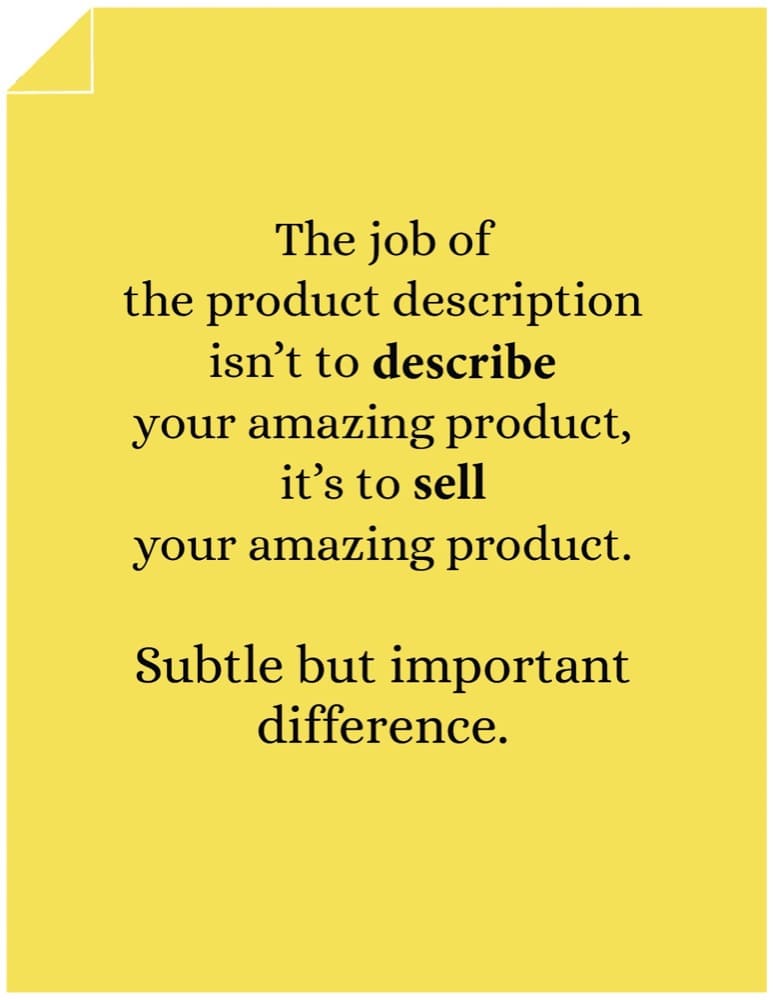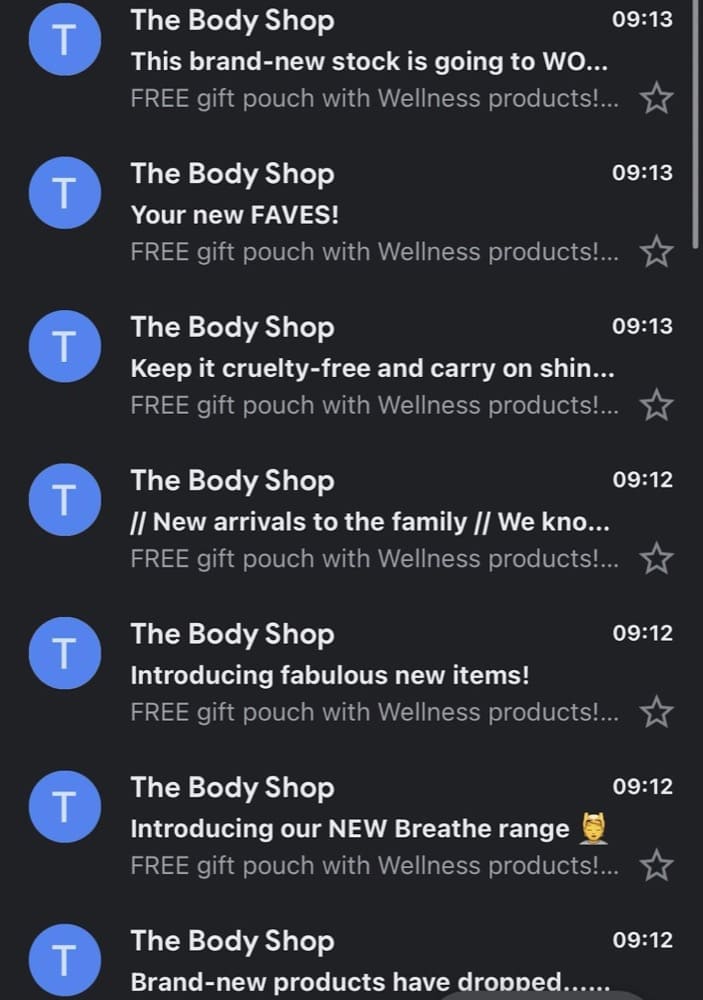Five Big Trends That Shopify Stores Need to Act On Right Now
If you’re after a navel-gazing article about future possibilities or hunches on what might become mainstream, then sadly, dear reader, you’re in the wrong place.
We spoke to experts who work on Shopify stores day-in-day-out to see what’s already on the horizon, impacting businesses like yours.
We’ll delve into changes in consumer behavior that will persist long after the pandemic, dealing with rampant competition, and being ready for the repercussions of privacy regulations.
Trend 1: The Need for Zero Party Data
This trend starts with one of my favorite foods, cookies. Sadly not the edible kind. No, this is all to do with digital cookies, specifically third-party cookies.
What are third-party cookies?
A third-party cookie is a cookie that is placed on a user’s hard disk by a website from a domain other than the one a user is visiting…and collects user data for the third party. As with standard cookies, third-party cookies are placed so that a site can remember something about the user at a later time.
whatis.com
So what?
Mounting consumer pressure, alongside regulatory changes in Europe and California, has led to Google’s plans to ban third-party cookies. While Firefox, Brave, and Safari already block third-party cookies by default, Google Chrome is the most widely used browser, with over 3.2 million users. This means that a third-party cookie ban by Google will have a more significant impact.
While Google has delayed the ban until 2023, be under no illusion that the use of third-party cookies will end. That’s not to say that other technologies won’t emerge to fill the cookie-shaped void.
How will the third-party cookie ban affect Shopify businesses?
Third-party cookies are predominantly used by ad platforms to track users across websites, gathering behavioral data to improve targeting. So Shopify businesses that spend big on targeted ads or retargeting campaigns will likely feel the ban’s effects. Here’s how:
- Ad performance: Rather than targeting individuals, digital advertising will need to use cohorts or context (e.g., Google’s latest proposal focusing on Interest-Based Advertising). This will likely lead to decreased advert performance. The ban will also lead to less accurate attribution data making it harder to optimize campaigns.
- Campaign costs: GetApp reported that “44% of marketers predict a need to increase their spending by 5% to 25% to reach the same goals as 2021” after the cookie ban due to the above factors.
How can Shopify stores capitalize on this trend?
Rather than wait for the industry to develop alternatives to third-party cookies, Shopify businesses should focus on collecting data directly via their website or other owned touchpoints (social media, customer service department, emails, etc.)
Enter zero party data.
Gen Furukawa, Co-Founder at Prehook, explains,
Zero-party data is data that is willingly and proactively shared with a brand. This can include goals, preferences, interests, and challenges that a customer may face.
Here’s an example of what this could look like in practice:
Uber Eats takes you through an onboarding quiz; you tell them your three favorite cuisines, the top reasons you order takeaway, and the most essential aspects when picking a takeaway.
Uber Eats might use this zero-party data to send you personalized messages highlighting the speed of their deliveries or health-conscious options if those were the preferences you highlighted.
Or they might use insights gathered across their customer base from the onboarding quiz to inform hypotheses for A/B testing.
Gen Furukawa says that zero-party data “is a competitive advantage. It lets you, the brand owner, understand exactly what customers want so that you can position your brand and product as the bridge to bring them from their current state to their ideal end goal. This is where personalization leads to a direct increase in revenue–higher conversion rate, higher average order value, and greater lifetime value.”
Jeremy Epperson, Chief Growth Officer at ConversionAdvocates, explains what’s important when asking users for their data:
People happily volunteer info if you promise to personalize their experience. The key is building trust and demonstrating the value the customer gets. Every piece of data you collect needs to be relevant.
Segment backs this up, too:
7 out of 10 consumers say they appreciate personalization, so long as it’s data they’ve shared with a business directly.
This all sounds great. But how can I get this zero-party data?
Gen Furukawa suggests gathering zero-party data through simple quizzes; during a sign-up, onboarding, profile creation, or post-purchase flow.
Prehook is one such quiz solution available to Shopify Plus brands. Jeremy Epperson also recommends collecting qualitative data from email opt-ins, polls, surveys, forms, and during checkout.
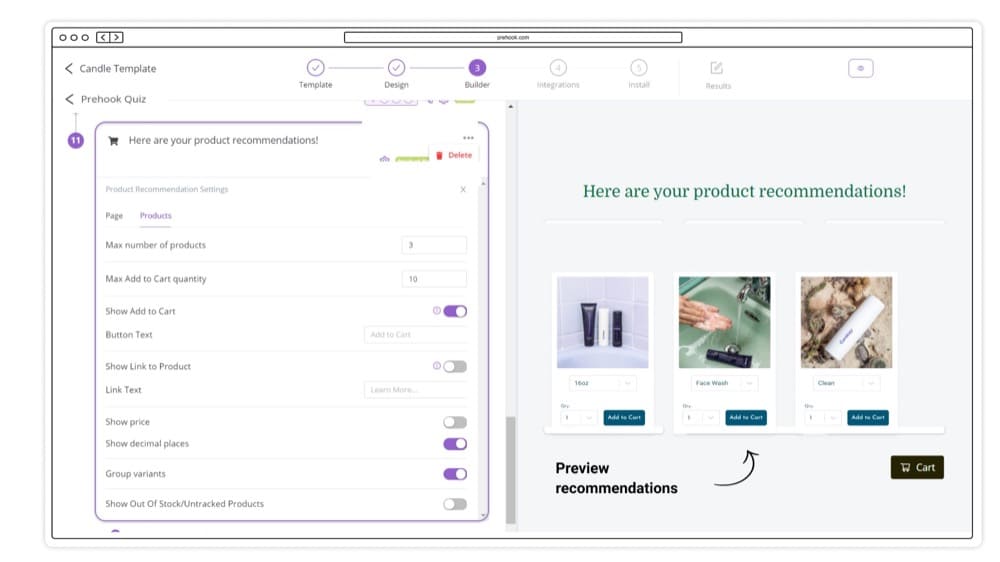
In terms of what to ask, think about how you will use the responses, e.g., inform test hypothesis, improve personalization, improve messaging.
Jeremy Epperson says
You can ask about motivation, buying criteria, concerns, important features, or comparative shopping. Ask about needs or self-identified attributes that can translate to onsite personalization, email campaigns, or channels. Ask them for preferences, then build experiences that make buying easier.
Trend 2: Consumers Are Paralyzed by Choice
There are an estimated 12 to 24 million ecommerce sites across the globe, with new stores created every day. So, unless you’re selling something genuinely unique, customers have an overabundance of choice. This glut of options leads to the paradox of choice, where customers struggle to make purchase decisions.
Rishi Rawat, product page optimization specialist at Frictionless Commerce, shares how you can help visitors get unstuck in the decision-making process:
The product description is where the shopper decides if the product is a good fit for them. It’s where the make or break happens.
Focusing on your product descriptions might seem like an inconsequential element in the grand scheme of things, but here’s why it’s significant:
- Research shows that 93% of online experiences begin with a search engine. A uniquely written product description focusing on your ideal buyer’s wants and needs will help your products get discovered in search results.
- More people are shopping online than ever before, and research shows this upward trend will continue after the pandemic across categories (see graph below). But online shopping lacks the tactile experience which helps the customer make a purchase decision. Excellent product descriptions fill in these sensory gaps and answer the questions customers might often have.
- Product descriptions are an opportunity for your brand personality to shine through, helping your business be memorable. It might also alleviate new customer anxiety around the legitimacy or safety of purchasing from you for the first time. After all, stock product descriptions do nothing to display your expertise or show that there’s a real team behind your website.
We know that online shoppers often have multiple tabs open to compare products. Those with the most compelling description will likely get the sale.
How can Shopify stores capitalize on this trend?
Rishi Rawat provides some pointers to perfect your product prose:
- Nail the opening: Shoppers know they have alternatives, so your introduction needs to make it clear: all that glitters is not gold. Intrigue them enough to stick around and understand how your product or solution is the real deal.
- Crush the middle: This is where you bring out the big guns and demonstrate product expertise. Prove how your product, for this price, is the absolute king of the hill.
- Finish the close: As shoppers read about the product, they form questions. Brands need to anticipate and address those questions in the closing. Shoppers don’t make purchases when they still have unanswered questions.
Eden Bidani, Founder at Green Light Copy, explains how you can make your product descriptions even more potent by describing the “end transformation” (why someone should buy) and not just the “what” (a product is).
Trend 3: Optimization Teams Are Shifting Focus from Converting New Users to Retention
After you’ve taken care of trend two–convincing customers to buy from you–it’s on to the next challenge: turning them into high-value repeat customers.
Traditionally, experimentation teams spend most of their time optimizing the purchase journey for new customers. But we’re seeing increasing interest in topics such as Customer Experience Optimization, where the broader user journey and customer lifecycle are optimized.
Juliana Jackson, product growth manager at CXL, explains why this trend is happening:
Most Shopify brands barely make profit (if ANY) from first-time buyers because of the ever-increasing costs of acquisition mixed with the fatigue of over-targeted ads, emails, and spam campaigns. (Just take a look at the bombardment of emails from The Body Shop Yikes.)
So working to increase customer lifetime value (CLV or CLTV) means increasing your profits as the cost of acquiring a new customer can be five times more than retaining an existing customer.
How can Shopify stores capitalize on this trend?
Start by working out your CLTV. There are a few different ways to calculate your CLTV, so use what will be most insightful for you.
I like to keep things simple with
Customer lifetime value = average purchase value x average number of purchases per year x average customer lifespan in years.
Once you have your current CLTV, it’s time to improve it. Aaron Orendorff, VP of Marketing at
Common Thread Collective, shared ten pointers to consider when approaching this topic:
Juliana Jackson suggests an old-school approach that might just be the ticket to break through the marketing message onslaught and entice customers back.
Most brands are chasing the next shiny thing in conquering high lifetime value and profitability. But there is something only a select few use that drives loyalty, creates excitement, and builds engagement: direct mail. Many people don’t touch direct mail because they think it’s complicated. But I discovered PostPilot (which integrates with Shopify) through my friend Drew Sanocki.
Drew told me how Ezra Firestone, founder of Boom! cosmetics tried a “win back” campaign targeting previous customers. He turned $1,510 spent on direct mail into $39,733 of sales, and I started paying attention.
Trend 4: Conscious Business
While corporate social responsibility pledges and ethical businesses have been a trend for a while, the pandemic, heightened emphasis on environmental and social issues, war, and political unrest have likely led to more people considering what’s truly important to them.
As a result, we’re seeing a considerable upswell in consumer preferences for conscientious businesses.
If you don’t think business and sustainability can work together, take 15 minutes out of your day to watch this inspiring story from Ray Anderson, founder of Interface, a carpet tile business. Ray increased sales and doubled profits while turning a very traditional “take/make/waste” industrial system on its head.
And to save you from Googling it, Interface achieved Ray’s grand vision and has gone even further since.
Krissie Claire, creative director & co-founder at MindfulCommerce, explained what this means for Shopify business owners:
It is more than possible to run an ecommerce business with good ethics and sustainability practices and even save money and make a profit! It can feel overwhelming, but every small step towards running a more mindful business is a positive one. And actually, it can be easier for online store owners to do it if they do not have a physical store.
Krissie gave an example:
Just because you run your business online (or perhaps you build them for your clients) doesn’t mean you don’t have a carbon footprint; consider your digital carbon footprint. Data centers are extremely energy-hungry, so every website visit to your store has a carbon footprint.
How can Shopify stores capitalize on this trend?
If you intend to market yourself as a conscientious business, you have to make sure you walk the talk. Otherwise, this has the potential to backfire badly.
With that in mind, Krissie Claire shared some practical ways you can lower the digital carbon footprint of your online store while also improving your user experience. Your carbon footprint is just one example of working towards being a conscientious business. There are many societal and environmental areas you could focus on.
To lessen your digital carbon footprint, Krissie suggests:
- Send fewer emails: There’s 4g of carbon in a single email before adding attachments.
- Optimize your experience: This is good for overall page speed and the planet. Review your images and ensure they are compressed and uploaded at the correct scale. Even web fonts can have an impact, so stick to modern formats. Consider your use of large images or videos–are they needed to achieve the desired effect or response?
- UX efficiency: Design user journeys that bring your customers quickly through the purchase process—no excess energy needs to be expended, and everyone wins.
- Keep it clean: Embrace the challenge of simple, efficient code in all areas of your site—weed out duplications and unnecessary plugins.
- Let your customers know: Consumers are looking for brands that are sitting up and taking action. Even if you’re taking small steps, it’s vital that you talk about this in your marketing so that consumers are aware but also so that you can inspire other brands to follow in your footsteps.
One additional resource is the B Corp assessment which is free to take and can help you understand the breadth of areas you could focus on to become a more conscientious business.
Trend 5: Automating the A/B Testing Process
Dylan Whitman, Co-Founder of Inveterate, predicts one of the most significant trends in ecommerce will be automation:
What automations ultimately mean is saved $$ and resources. You may even have a person on your team focused on automations.
And while automation makes complete business sense, most experimentation teams struggle to implement it.
Medha Umarji, senior director of experimentation at Fanatics provides some great examples of how her team is automating parts of their A/B testing process. These automations increased test velocity from ~5-10 to 50-70 tests per month.
How can Shopify stores capitalize on this trend?
Ben Labay, CEO of Speero, summaries a great article from DoorDash. While they built a customized experimentation platform, you can still follow the principles they employed with your existing tech stack to automate elements of your experimentation program.
Some areas of the testing process to consider automating:
- Automate the prioritization of test hypotheses or add concluded tests back into a hypothesis backlog for further iterations. Ruben de Boer shares his approach to automating prioritization here.
- Automate pushing new tests live from a backlog, based on others finishing.
- Automate the analysis of (certain types of) tests after they conclude.
- Automate the communication of test results to your wider business.
- Automate elements of your project management system where you manage your testing workflow, e.g., signing off of tests or moving work to other teams who need to be involved, e.g., QA.
- Automate templated records of test results for an internal knowledge base.
Summary
While some of the external market forces covered above might feel a million miles away from your daily business operations, our Shopify experts have illustrated how each of them trickles down and (should) shape your approach to marketing and experimentation.
Every change happening around the world will represent a growth opportunity, only obtained by the Shopify business owners who work out what it means to their business.

Written By
Katie Kelly
Edited By
Carmen Apostu

